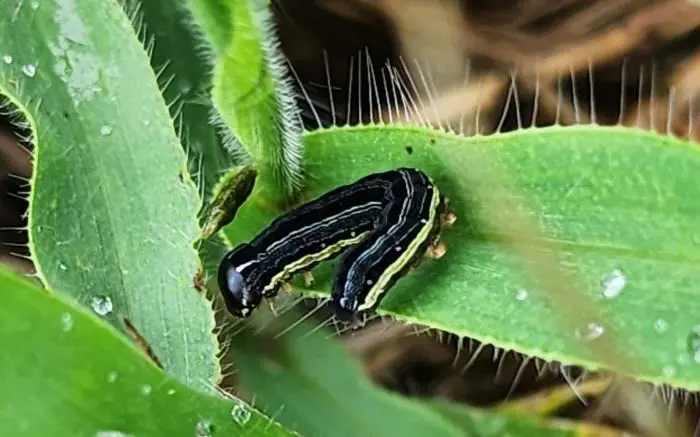South African farmers are being urged to stay vigilant against a possible second wave of African armyworm infestations. According to Dr. Gerhard Verdoorn, operations and stewardship manager at CropLife South Africa, the country recently witnessed one of its largest outbreaks on record, spanning the summer rainfall region.
Although African armyworm typically targets pastures and veld, the extensive nature of this year’s infestation led to soya bean, maize, and sunflower crops also being affected. Fortunately, the damage to these crops has been minimal, Verdoorn reported.
Past Outbreak and Current Risks
The initial outbreak, which began on 15 February, subsided by mid-March, with no further reports of damage or sightings. However, experts warn that another strike could occur within the next week or two.
While this second wave is unlikely to be as severe due to cooler temperatures, farmers must remain on high alert. Professor Johnnie van den Berg, programme manager of Integrated Pest Management at North-West University, emphasized that the development of pupae from the February outbreak has been hindered by low temperatures. This means the next generation of moths does not pose a direct risk.
However, the professor warned that new infestations could originate from hotter regions in northern Africa and be carried into South Africa by prevailing winds.
Challenges in Detection and Control
Early detection is critical in managing African armyworm infestations effectively. Van den Berg urged farmers to actively scout their lands, as larger larvae become increasingly difficult to control.
“Identifying African armyworm can be challenging, especially for the untrained eye, as they share similarities with fall armyworm (Spodoptera frugiperda) and cutworm (family: Noctuidae). However, the presence of moths is a strong indication that larvae are already present on the land,” he explained.


For pasture farmers managing large tracts of land, scouting for small larvae can be particularly challenging. Van den Berg recommended monitoring bold patches of pasture as an indicator of potential infestation.
Confirmed New Outbreak Locations
The Department of Agriculture, Rural Development & Environmental Affairs confirmed 31 cases of African armyworm in the Free State within the past two days. The affected areas include:
- Letsemeng Local Municipality – Jacobsdal, Luckhoff, Koffiefontein, Petrusburg, Perdeberg, and Emmaus.
In response, the department has pledged to provide farmers with pesticides and blowers to spray affected areas. Additionally, a briefing session and training for officials and farmers will be conducted to ensure proper management and control strategies.
Preparedness is Key
Given the unpredictability of the African armyworm’s migration patterns and infestation severity, farmers are urged to implement proactive pest monitoring and rapid response measures.
With government support and expert guidance, South African farmers can better mitigate the risk of crop and pasture damage, ensuring food security and agricultural sustainability in the face of this ongoing threat.